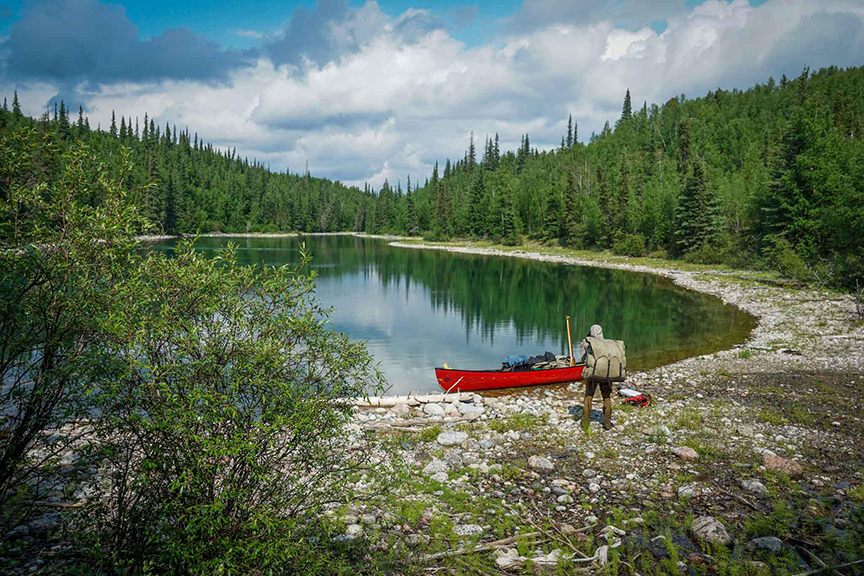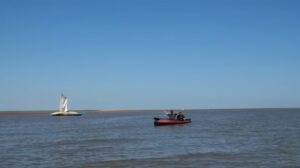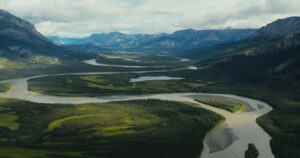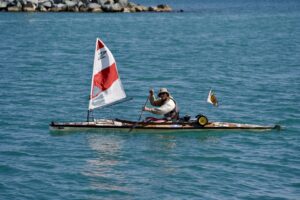Zach Fritz and Taylor Rau are experienced canoeists but had never tackled anything on this scale before. For 105 days, beginning in mid-May, the two Minnesotans paddled 4,400km from Fritz’s family cabin in Minnesota’s North Woods to Chantrey Inlet, Nunavut, on the shores of the Arctic Ocean.
Both had their introduction to canoeing through a local program called Les Voyageurs, which took high school students on 30 to 45-day canoe expeditions in northern Canada. The two returned to work as guides for the program. At a turning point in their lives, they decided to tackle a big journey.
Fritz mapped out the way, studying the accounts of fur traders and explorers. The northern part of their route included the classic Barren Ground rivers — the Kazan, the Dubawnt, the Thelon, and the Back.

When their paddle ended in Chantrey Inlet, a boat conveyed them further north to the Inuit community of Gjoa Haven, from which they flew home.
Excerpts
Excerpts from their blog give the flavor of an immense journey, well-planned and carefully executed:
We pushed off in Big Falls, Minnesota early on May 6 with a beautiful first day. The Big Fork River had a wonderful current and some amazing scenery to go with it.
We quickly jumped onto the Rainy River and headed west, where we were met with some rainy days, but a lovely tail wind. We used our sail to help us make some good distance on the river. Quickly, we were in a routine and able to get ourselves a day and a half ahead of our schedule.
Toward the end of the Rainy River, we officially crossed into Canada and moved onto Lake of the Woods, our first of several large lakes to cross.
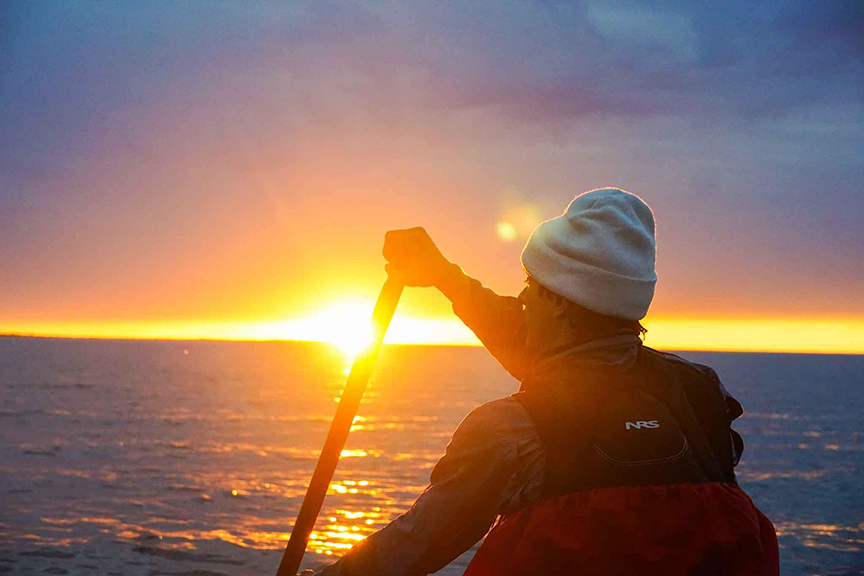
Photo: Zach Fritz and Taylor Rau
We are leaving the Winnipeg River system tomorrow and working our way north and across Lake Winnipeg — the biggest lake of our trip. We are expecting to have a more irregular schedule, as we move when the wind will allow us.

On the stormy shores of Lake Winnipeg. Photo: Zach Fritz and Taylor Rau
Saskatchewan River
At the end of the lake, a large, expansive wetland, where the Saskatchewan River flows into the lake, was like a big maze…What we saw in front of us and what was on the maps were very often conflicting. There were many braided channels to take. A few attempts through reedy passages that either ended abruptly or fizzled into nothing finally brought us into the main lazy channel with tall grasses hemming the rivers shoreline.
For several days, the current of the river increased and so did the size of the river. Its long, winding bends forced us to stick close to shore and follow the inside bends of the river to paddle with the slowest current against us. Going upstream, our strokes felt heavier and sluggish and our muscles working much harder.
The Saskatchewan reminded us a lot of the Mississippi River back home, with similar width, current, and milky waters. The rivers edges were lined with grassy, willow shores and an abundance of poplar and box elder trees.

Photo: Zach Fritz and Taylor Rau
A long day
For our first full day on the [Sturgeon Weir] River, we waded, lined, and pulled our canoe up almost continuous sets of shallow rapids. Constantly getting in and out of the canoe, paddling against the current when we could, then either pushing or pulling the canoe when the current was too strong. It was a very long day.

Photo: Zach Fritz and Taylor Rau
Throughout our time on the Kazan, we only had one portage to do to avoid a nasty rapid early on. The rest of our time on the river was spent traveling down its large, fast flowing channels with easy whitewater here and there. Just about the best paddling anyone could ask for…
Day by day, we slowly saw the trees leave, patches here and there would appear on the hillside, but largely disappeared after we left Ennadai Lake. As we transitioned from the treeline to the tundra, we began to see new wildlife and plants along our route. The Kazan offered us our first of many caribou, muskox, and more varieties of birds than we could keep track of.

With the Barren Grounds came the mosquitoes — many, many mosquitoes. Photo: Zach Fritz and Taylor Rau
Windbound
We began following what seemed like a decent river. Very quickly, our hopefulness faded as the river practically dried up to rocks. We knew quickly we were in for a very long day…
We spent the next few days finishing up the big lakes of the Thelon. For the most part, the winds were tricky side winds from the north, and finally, on our last day on Aberdeen Lake, the north wind became too strong and we had to call it a windbound day shortly after lunch. The north winds brought cold temps off the Arctic Ocean. Bundled up, we fished from camp and caught some more beautiful lake trout…
Finally, about 5:30 am on day 105, we took our final paddle strokes across Cockburn Bay and onto Victoria Headland along Chantrey Inlet on the Arctic Ocean. Arriving at our final destination, we had been paddling for almost 24 hours straight and gone well over 100km during that time. Our canoe beached, we gave each other a hug of excitement…

A boat conveyed Zach Fritz, left, and Taylor Rau from Chantrey Inlet to Gjoa Haven, where they caught a flight home. Photo: Zach Fritz and Taylor Rau
In an interview with MRPNews, the canoeists admitted they aren’t planning any further adventures in the immediate future. Fritz has just relocated to Wisconsin, where his girlfriend lives, and Rau has begun a new job.
